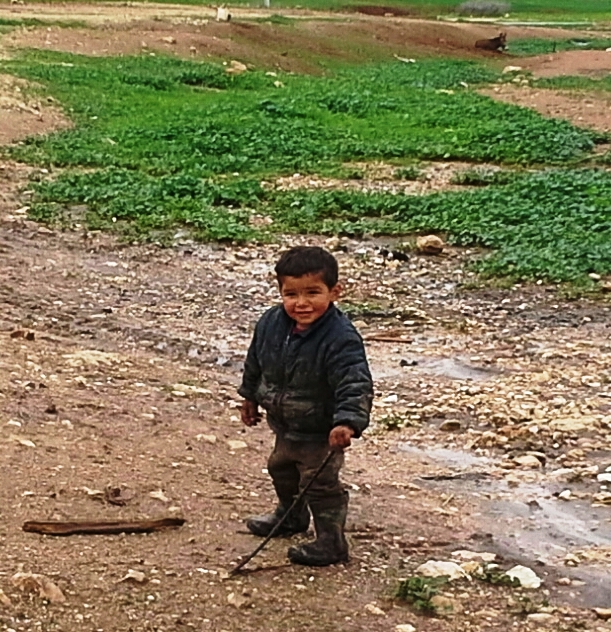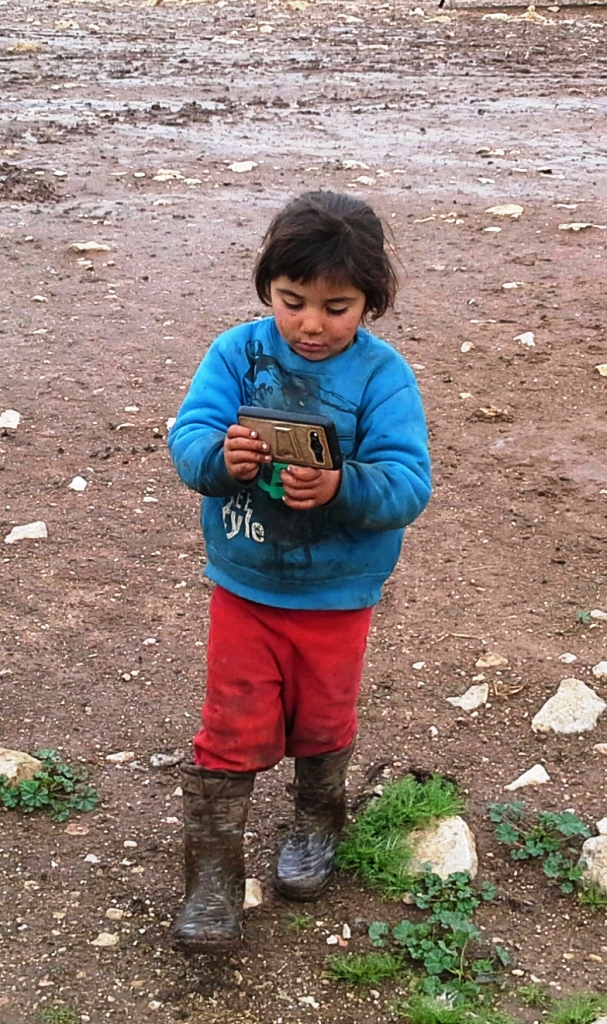Palestinian Jordan Valley
Mud all over, not everywhere is accessible.
Umm Zuka
We wanted to get to the new settler outpost. We waded in mud and nearly reached the entrance to see whether it expanded during the two weeks since we were there last, whether new structures have been erected. It is now surrounded by a fence. That’s new.
IN front of the entry gate (an opening in the fence), on its left, is an earthen pile in which a ditch has been dug, lined with a galvanized sheet and covered with a plastic awning. It seems a sort of shelter for cases of bombing or an infantry attack, or some firing post reminiscent of the ditches of Europe in World War One. (photo from afar)
Usually settlements in the region are protected by tall fences, mostly lit all around. Some of them bear cameras, as well as electronic gates and guards at the gate (who are provided by the Ministry of Defense, presumably. They cost a lot of money).
and guards at the gate (who are provided by the Ministry of Defense, presumably. They cost a lot of money).
And one should also bear in mind the various types of weapons possessed only by army personnel and… the settlers. The Palestinian localities and Bedouin encampments are open and vulnerable in every direction. What are the settlers afraid of??
We saw the large moving truck parked near the gate of the outpost. From Daphne’s report two days ago we learned that it is there permanently, perhaps serving as a housing facility instead of a caravan?
Inside the outpost compound we saw three private cars parked. Is someone else living there? We could not approach because of the mud, and see whether there were any new structures. From afar we detected boys at work (7 boys live there on a permanent basis), but could not tell how many there were.
Ras Al Ahmar
We did not enter, but were told that the residents got back the nine tractors that were confiscated three and a half months ago, in addition to the destruction of structures and two evacuations because of army maneuvers. The residents paid thousands of shekels to release the tractors, and the Civil Administration demanded they sign a commitment not to use the tractors. They were returned only after legal provedures were held. I don’[t know what the conditions are. Nine days ago, yet again, the structures belonging to the Ali Bani Odeh family were demolished (see Daphne’s report of that date). We were told that so far they received one tent from someone, that should now suffice for all the needs of this family and its livestock, in the night cold and the rains that were falling all week long.
demanded they sign a commitment not to use the tractors. They were returned only after legal provedures were held. I don’[t know what the conditions are. Nine days ago, yet again, the structures belonging to the Ali Bani Odeh family were demolished (see Daphne’s report of that date). We were told that so far they received one tent from someone, that should now suffice for all the needs of this family and its livestock, in the night cold and the rains that were falling all week long.
On our way –
Zaatara junction checkpoint and Maale Efrayim checkpoint there were no inspections of delays.
Hamra Checkpoint15:10 – on our way back Palestinian vehicles were being inspected. 3 cars were waiting in line from the Jordan Valley bound for the West Bank hills.
The entrance to Akraba – open, Jawarish – closed, as it has been for the past year and a half. Because of the mud, it cannot be bypassed. Who knows the villagers reach the main 505 road, and how long it takes them.
By the roadside above Yatma we see an army jeep parked, next to it two soldiers and a Palestinian. Around 15:45.
Strange phenomenon at the Gitit “tub” – by this we mean all the lands situated some kilometers from Gitit settlement, Palestinian lands given to the settlement which are not tended but rather leased bit by bit to various people. One of the lots, about 10 dunams, to the right of the road, is surrounded by a ditch and an earthen dyke just like the Gokhia Gate, only less high. The reason is not at all obvious.


